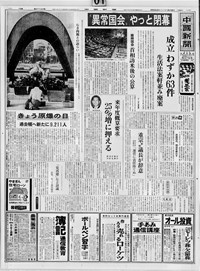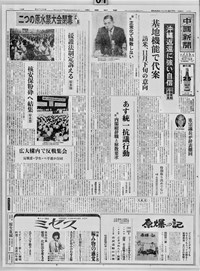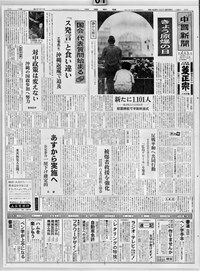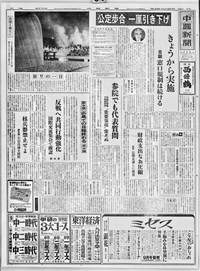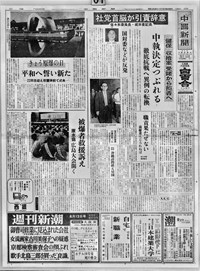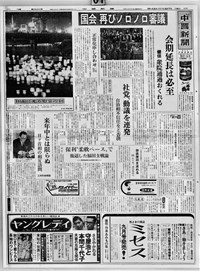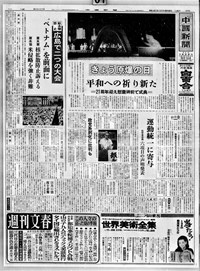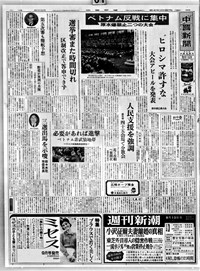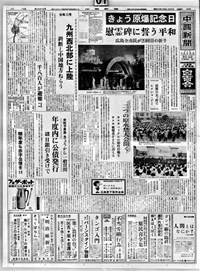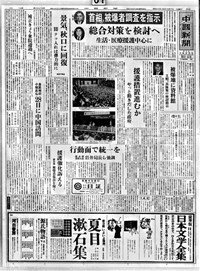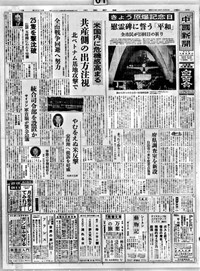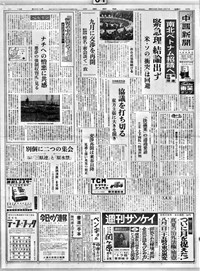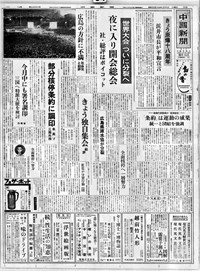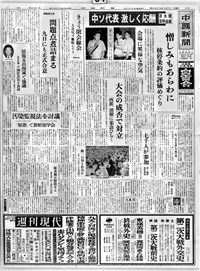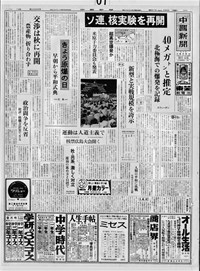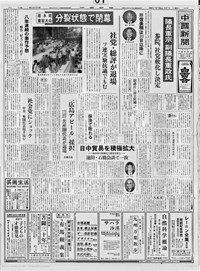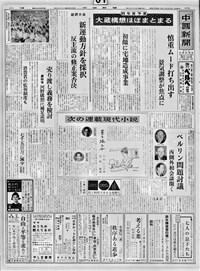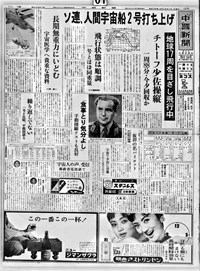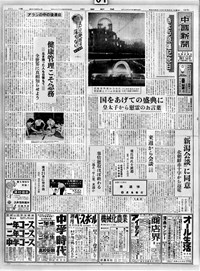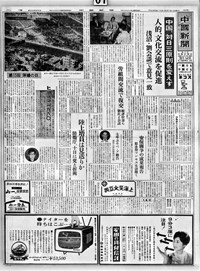The Chugoku Shimbun, launched as the Daily Chugoku in 1892, published its 46,692nd issue on July 1, 2024.
In 2021, the Chugoku Shimbun’s Hiroshima Peace Media Center posted on its website the front pages of the morning editions of August 6 and 7th for each year starting in 1946, the year after the atomic bombing, when the General Headquarters of the Allied Forces (GHQ) imposed controls on news reporting. With that, readers are able to get a glimpse of the A-bombed Hiroshima’s postwar history.
Now, the front pages of the morning editions of August 6 and 7th from 1930 to 1944 and of August 6, 1945, have been added to the website. There is no front-page information for August 7, 1945. The day before, August 6, the Chugoku Shimbun’s head office had been damaged in the atomic bombing. The company lost 114 employees, or around one-third of its workforce, including those who died from the bombing’s aftereffects.
The economic depression of Japan’s Showa period (1926∼1989) cast a dark shadow over the newspaper in 1930, the year before the Manchurian Incident. In 1938, the year following the outbreak of the Sino-Japanese War, when a general mobilization policy for the war effort had grown ever harsher, the paper wrote with conviction that “violations of governing laws and ordinances are acts of treason.” The front pages carried propaganda articles based on Japan’s Imperial Headquarters announcements, especially during the Pacific theater of World War II starting in 1941. The editorial in the morning edition published on the day in 1945 that Hiroshima was destroyed by a single atomic bomb stated, “The only path to victory in the war is to overcome this emergency,” despite the fact that Japan was already on the verge of surrender.
A close look at the articles and headlines shows that Japan was constantly at war with other nations during a period of around 15 years and that the media were a cooperative partner in the war effort. From the Sino-Japanese War in 1894 to Japan’s defeat in 1945, the “military city of Hiroshima,” as it was known, consistently served as a major center of support for militarism and aggression. When thinking about the atomic bombings of Hiroshima and Nagasaki by the U.S. military, a narrow focus should not be placed on the beginning of the war in the Pacific in December 1941 as the starting point of everything.
*The articles might contain expressions no longer used today, but the original language at the time of publication has been retained, given that the information represents primary source material.

